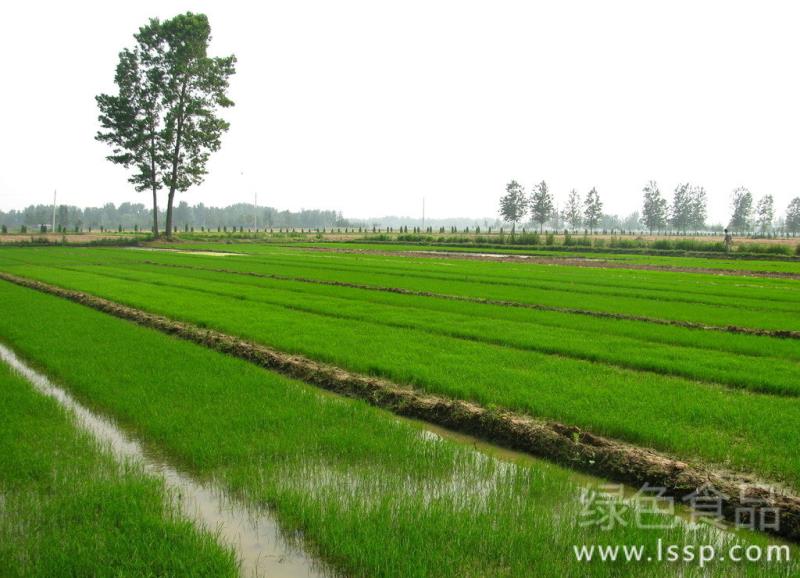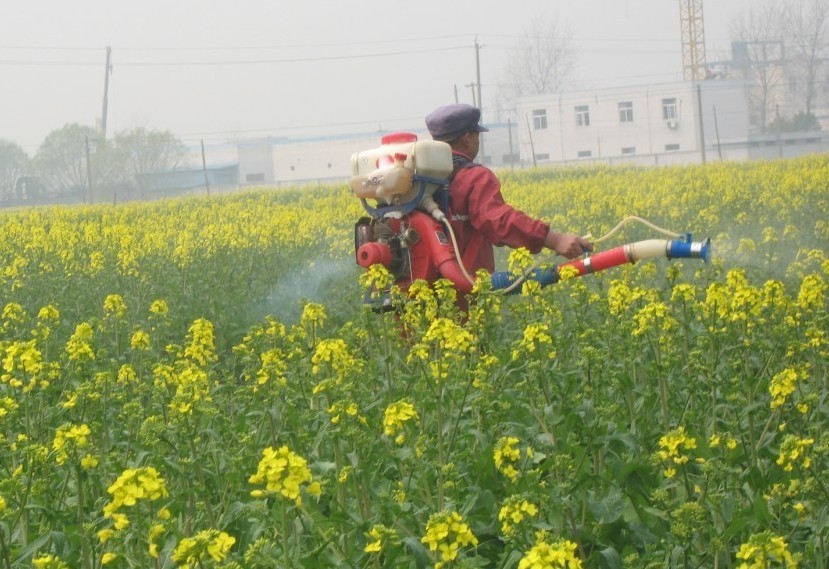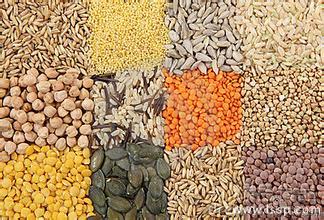Improvement methods and fertilization measures of Rice Field in Saline-Alkali soil

paddy field
Saline-alkali soil has special physical and chemical properties such as high pH value and poor permeability, which leads to unstable rice yield and poor quality. Therefore, it is necessary to carry out improvement and fertilization in a planned way. The two should be carried out simultaneously to improve the physical and chemical properties of the soil, increase the soil temperature, promote the transformation of nutrients in the soil, and effectively improve the fertility. To create a cultivated layer with deep, mature and sufficient nutrients, the soil unfavorable for cultivation can be transformed into cultivated soil, and gradually cultivated into fertile soil. Oil soil.
A sound irrigation and drainage system is the key to fertility and improvement.
For planting rice in saline-alkali land, the most critical farmland construction is good water source and sound irrigation and drainage canal system, which are also the most critical measures for improvement and fertilization. It must be able to drain irrigation, drainage irrigation freely, and drainage channels should be more and deeper, so as to enhance the permeability of water in the field and effectively reduce salt. If only irrigation without drainage, it will often aggravate the secondary salinization of soil, especially the newly opened over-sticky plots, and the serious consequences will not be planted; avoid replacing drainage with infiltration, and mainly drainage, so as to improve the purpose of fertilization. It can be said that good production cannot be achieved without good water sources and irrigation and drainage measures.
II. Application of Fertility Improvement Substance
1, guest soil: mainly too sticky soil to add sandy soil, improve the texture of the soil structure, so that too sticky soil has a certain space, conducive to water, air and other exchanges. This is a very effective measure for saline-alkali land improvement, and the effect is lasting. Generally, 300-500 square meters of sand are added per hectare, which can be added in about 3 years. For sandy soil, its own saline-alkali is not very large, can pull sand hillock soil, apply organic fertilizer improvement. When the guest soil must cooperate with deep ploughing, make it evenly distributed in the tillage layer.
2. Application of organic matter: It is best to apply it in autumn ploughing. This is an important measure to improve and fertilize the soil. It can improve the structure of the soil, regulate the porosity of the soil, and activate the soil to effectively release the stored nutrients. At the same time, it increases the nutrient supply in the soil. This is a common measure for us to cultivate high-yield fields. Organic matter is widely used, all kinds of manure, grass manure (mainly straw, rice stubble) can be. Manure should be applied 20-30 square meters per hectare every year; grass manure should be carried out once every 3 years or so, and the soil layer should be deeply turned, about 5000 kg per hectare each time. Straw returning to field is carried out in autumn, and is easy to disperse after freezing and thawing in winter and spring, and is easy to be decomposed and utilized by microorganisms. Cut into about 10 cm pieces and bury them in the ploughing layer. The nitrogen fertilizer applied according to 1% of the rice straw amount and the proper amount of biological bacteria added can not only overcome the nitrogen competition of rice straw transformation, but also facilitate the yield increase. The nitrogen application rate should be reduced appropriately at heading stage, which is the period when straw releases fixed nitrogen. It makes sense to return the fields every two to three years. For many rice farmers, chemical fertilizers are often used in large quantities to carry out predatory production, and the application of organic fertilizers is not enough, which is easy to cause the degradation of rice fields, which is not conducive to the cultivation of high-yield fields, that is to say, it is not conducive to long-term production.
3. Application of chemical improvement substances: mainly refers to the use of gypsum and sulfuric acid. Gypsum is mainly used to replace sodium ions in the soil by calcium ions, so as to achieve the purpose of improvement; sulfuric acid is used to replace sodium ions by hydrogen ions, and the improvement also increases the acidity of the soil. Gypsum is generally applied at 5000 kg/ha and sulphuric acid at 2500 kg/ha. It should be applied several times, combining irrigation, drainage and ploughing. If attention is not paid to irrigation, drainage and ploughing technical measures, the effect will not be too good or lasting. Chemical substance improvement generally lasts a long time, but it is not once and for all, and there are certain difficulties. First, economically, there is a large need for funds. The second is mechanical, time-consuming, difficult to operate. This is a simple improvement measure, which is not used much. Production is often in the seedling and Honda critical period with more sulfuric acid.
III. Rational farming
1. Principle: To ensure that the soil plowed up can be matured before harrowing, and that the fertilizer and improvement materials applied can be mixed evenly. Autumn ploughing as far as possible is beneficial to sunning, weeding and alkali washing. After freezing and thawing alternately, the soil ripening time is prolonged, so that the soil is loose and porous, and the salt rises to the soil surface, and is washed out through drainage; deep ploughing is required gradually, and the alkalized soil layer is gradually broken to increase soil permeability. If rotary tillage can also be carried out in spring. In the early stage of production, continuous tillage should be carried out, and in the later stage, it can be carried out once every three years or so. The rotation form of ploughing, rotary tillage and harrowing of the original crop should be gradually implemented to save water and working hours.
2. Autumn ploughing depth:
(1) For old rice fields with good drainage and high fertility, it is generally appropriate to plough 15-18 cm deep, because the roots of general high-yield rice are mainly distributed in the soil layer of 0-15 cm, accounting for more than 90% of the total root volume. The ploughing depth of 15-18 cm can fully meet the requirements of root development of high-yield rice. Too shallow ploughing, shallow rice root distribution, not timely irrigation easy to occur drought damage, and under the condition of high fertilizer, easy to disease and lodging; too deep ploughing, because the paddy soil is rich and thin at the top, light and salty at the top, ripe at the bottom, turning the saline-alkali, barren and raw soil at the bottom to the ground surface will inevitably affect the production of the current year, light slow seedlings are bad, heavy stiff seedlings die seedlings.
(2) For sand-alkali land, dryland to water land and low-lying land with poor drainage, it is necessary to properly shallow tillage, generally 12- 15cm, because the soil of sand-alkali land and dryland to water land is fine and loose, such as ploughing too deep, it is not easy to dry and mature, and it is easy to cause water leakage and fertilizer leakage. Due to the long-term reduction state of soil, soil nutrients are not easy to decompose and release, and it is easy to nest salt and alkali. Proper shallow tillage can dry and dry the topsoil thoroughly, so as to facilitate ventilation and oxygen supply, release soil fertility and clean salt and alkali.
(3) For heavy saline-alkali land and newly opened wasteland, shallow ploughing must be carried out, and the general ploughing depth is 10-12 cm. This is because shallow tillage can make the surface soil dry and dry thoroughly, which is conducive to removing salt and alkali. First, a soil desalination layer of about 10 cm is created to ensure normal seedling growth after transplanting. Then, by strengthening irrigation management and continuously leaching and diluting the soil layer, rice growth and development in the middle and late stages can also be ensured. If the tillage is too deep, the salt and alkali leaching of the tillage layer is not clean, and it is difficult to guarantee the survival of seedlings after transplanting. Therefore, shallow tillage is the key to rice seedling survival and yield increase in newly opened wasteland and heavy saline-alkali land.
3. Quality of ploughing and harrowing: The ploughing depth in the same field shall be uniform, no furrow shall be formed, no high ridge shall be formed, and the field surface shall be flat after ploughing. Tillage should be closely linked, and the turning and buckling of the soil should be good. After ploughing, do not rake, in order to facilitate the sun, to prevent alkali soil stuffy alkali. After spring drought leveling, soak the field, wash alkali (generally, water to 2/3 of the soil can be used, which is conducive to saving water), rake the ground and apply base fertilizer, which must be dragged flat, which is the basis of Honda management. For sandy land, it is best to dry land preparation first, dry leveling, and then water, so that the land is relatively soft, you can directly transplant rice.
IV. Scientific use of chemical fertilizers
Most of the applied fertilizer is stored in the soil every year, which not only provides the rice needs of the season, but also is an important fertilizer improvement measure.
(1) Chemical fertilizer and organic fertilizer should be used together: This is an important measure to regulate rice nutrition and improve soil fertility. The combination of the two can not only improve crop yield but also prevent soil hardening caused by large amount of chemical fertilizer, so as to achieve the combination of use and cultivation.
(2) Pay attention to the choice of fertilizer: do not use chlorine-containing fertilizers, such as potassium chloride, especially heavy saline-alkali soil, so as not to increase harmful ions. As far as possible, use acidic, neutral fertilizers such as ammonium sulfate, stone, urea, potassium sulfate, etc. For compound (mixed) fertilizers, generally do not contain alkaline substances and chloride ions can be.
(3) Nitrogen, phosphorus and potassium should be used in combination: pay attention to balanced fertilization, not only heavy nitrogen but less phosphorus and potassium, appropriate increase of phosphorus and potassium can improve quality and enhance resistance. It can not only improve the yield of the season, but also improve the comprehensive utilization rate of fertilizer, reduce the loss of fertilizer, make the soil fertility balanced, and facilitate the balanced absorption of nutrients. In the process of improvement, the amount of fertilizer used should be larger, and after years of cultivation can achieve stable yield, the amount can be gradually reduced.
(4) Pay attention to the fertilization method: the base fertilizer should not be too large and applied too early to prevent volatile loss. It is best to apply a good chemical fertilizer after water raking and leveling, and apply fertilizer to the whole layer with mud precipitation, so as to achieve deep application and effectively prevent fertilizer loss. The topdressing method is to apply water and fertilizer, that is, to apply it immediately after discharging old water into new water, so as to eliminate excessive salt and prevent both alkali and fertilizer damage, affecting rice growth. After fertilization, use machinery or animals to cultivate, so that fertilizer can fully enter the cultivated layer, and the loss can be minimized.
Saline-alkali soil improvement and fertilization is a long-term project, but also a comprehensive measure of the use of the process, a single measure can not play a decisive role. Different measures should be selected according to different plots, so that they can be targeted, effective quickly and lasting.
- Prev

Disease conditions and Control techniques of Sclerotinia sclerotiorum in Brassica napus
Disease conditions and Control techniques of Sclerotinia sclerotiorum in Brassica napus
- Next

New Year's spring ploughing is coming, how can I buy high quality seeds?
New Year's spring ploughing is coming, how can I buy high quality seeds?
Related
- Fuxing push coffee new agricultural production and marketing class: lack of small-scale processing plants
- Jujube rice field leisure farm deep ploughing Yilan for five years to create a space for organic food and play
- Nongyu Farm-A trial of organic papaya for brave women with advanced technology
- Four points for attention in the prevention and control of diseases and insect pests of edible fungi
- How to add nutrient solution to Edible Fungi
- Is there any good way to control edible fungus mites?
- Open Inoculation Technology of Edible Fungi
- Is there any clever way to use fertilizer for edible fungus in winter?
- What agents are used to kill the pathogens of edible fungi in the mushroom shed?
- Rapid drying of Edible Fungi

